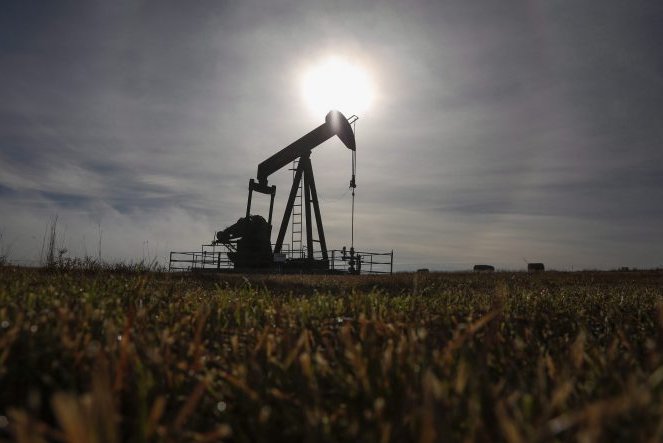New research suggests Canadian oil is among the world’s most carbon-heavy, but Canada’s industry also has rules that could make a big dent in global greenhouse gas emissions if they were adopted worldwide.

Joule Bergerson of the University of Calgary said if oil-producing countries adopted regulations similar to Canada’s that limit the amount of gas flared or vented into the air, it could cut greenhouse gas emissions from oil production by almost a quarter.
“It could make quite a bit of difference,” said Bergerson, a co-author of a paper published in the journal Science which was funded by Canada’s Natural Sciences and Engineering Research Council.
Bergerson and her colleagues from Stanford University in California analysed how much carbon was contained in oil from nearly 9,000 oilfields in 90 countries, representing about 98 per cent of global production. Using data from satellites, industry, government and previous research, they also estimated how much methane and other greenhouse gases were released along with the oil for those oilfields.
Then they added the two sources of climate-changing emissions together and calculated how much of them were released per barrel of oil. They calculated that Canada’s oilpatch was the fourth most carbon-intensive on the planet, behind Algeria, Venezuela and Cameroon.
Canada’s rating was nearly twice the global average.
“We’ve known that for quite some time, that it’s a more difficult resource to get out of the ground,” Bergerson said. “That results in additional greenhouse gas emissions.”
READ MORE: Report suggests oilsands emissions could go over Alberta’s cap by 2030
Watch below: Some videos related to emissions limits in Alberta.
What was surprising was the difference that flaring and venting made to carbon emissions. The paper concludes that about half of the highest-carbon oil comes from fields with high rates of flaring and venting.
In fact, gas releases are why Algeria and Cameroon are more carbon-intensive than Canada, said Bergerson.
Gas flaring increased steadily between 2010 and 2016, the paper says. That includes countries such as the United States, where flaring has nearly quadrupled.
Those increases could be stopped if everyone took a more Canadian approach, which Bergerson described as world-leading.
The paper points out that in Canadian offshore fields, production restrictions are imposed if flaring is excessive.
READ MORE: Alberta methane releases underestimated: ‘If we thought it was bad, it’s worse’
In Alberta, flaring fell nearly two-thirds between 1996 and 2014.
The paper concludes that if minimal flaring standards were imposed worldwide, the amount of greenhouse gases emitted from producing the average barrel of oil would fall by 23 per cent.
While most carbon from fossil fuels is released when they are burned, Bergerson said cutting releases from production also matters.
“This is the evolution, to adopt much more stringent regulations.”
READ MORE: Alberta energy minister slams Trudeau government’s clean-fuel standard plan
Watch below: On Aug 29., 2018, Environment Minister Catherine McKenna was asked if she would consider delaying the release of her government’s clean fuel standard because of concerns raised by the Alberta government.






Comments